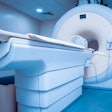
Radiology has a central role in healthcare: It makes up 7.5% of U.S. healthcare expenditures and 14% of Medicare's Part B spending, with direct costs for radiology totaling $175 billion per year. So as healthcare delivery and payment systems shift, radiologists are challenged to operate within a different framework.
Although most radiology reimbursement is still fee-for-service, risk-based models such as accountable care organizations (ACOs) are becoming more prevalent -- not just in the private-payor market, but also in the government-payor arena, according to Teri Yates, founder and principal consultant of Accountable Radiology Advisors, a specialty management consulting firm for radiology. She discussed how radiologists can remain successful under risk-based payment models in a June 25 webinar.
 Teri Yates from Accountable Radiology Advisors.
Teri Yates from Accountable Radiology Advisors.
"Radiology is a vital component of the diagnostic process, and it's crucial that the radiology service meet the needs of its key stakeholders in the hospital," Yates told webinar attendees. "And as payment models shift, radiology moves from being a revenue stream to being a cost center -- requiring radiologists to change the way they provide imaging services."
Priority No. 1: Eliminate excess imaging
The new priorities of utilization management, quality of service, care coordination, and collaborating with doctors and administrators throughout the hospital are keys for success, according to Yates. Focusing on these priorities under the risk-based payment model will make imaging providers more competitive and successful.
"Under the fee-for-service model, volume is the primary driver of economic success," Yates told webinar attendees. "Under the risk-based payment model, judicious use of imaging and the quality of care are the main drivers of economic success."
Why eliminate excess imaging? Unnecessary imaging increases the risk of future harm from radiation exposure, provokes costly investigation of incidental findings, and prolongs the length of patient stays in the hospital. Campaigns such as the Choosing Wisely program, led by the American Board of Internal Medicine (ABIM) Foundation and Consumer Reports, are trying to curb low-value imaging through education.
"Risk-based payment models will up the ante on this," Yates said.
Decision-support software can reduce unnecessary imaging by helping physicians order imaging studies that conform to evidence-based guidelines -- that is, estimating the benefits of an imaging exam in a specific clinical scenario based on ACR Appropriateness Criteria, Yates said. Decision-support software integrates with a computerized physician order-entry system, and research shows that referring physicians accept point-of-order decision support.
How does most unnecessary medical imaging occur? The wrong study is ordered for a particular clinical question, which leads to additional studies. Or studies are repeated because the results aren't shared between providers or institutions. Errors in interpretation can also prompt further imaging evaluation.
"These factors can be addressed by point-of-order decision support, referring physician education, using health information technology to make patients' records portable, and using diagnostic checklists to prevent error," she said.
Priority No. 2: Increase quality and safety
Improving quality and safety is the responsibility of both the technologist and the radiologist, according to Yates. Technologists must adhere to screening and contrast administration protocols that minimize the incidence of contrast-induced nephropathy and nephrogenic systemic fibrosis, as well as track that radiation doses are as low as reasonably possible.
Radiologists must report and communicate critical results quickly and effectively and frequently assess their own interpretive accuracy using peer review. Both the technologist and the radiologist can use patient identification processes to prevent wrong-site/wrong-side/wrong-patient imaging events.
"Radiology is the second most common source of wrong events," Yates said. "Why? Because radiology volumes are high, which increases the opportunity for human error. Time pressure and communication problems such as limited patient comprehension, illegible handwriting, or inadequate documentation also contribute to imaging exam errors."
To prevent errors, use two separate data points to identify patients, involve the patient in the preprocedure verification process, and, especially for interventional radiology cases, use a checklist and a "timeout" before proceeding with the exam.
Priority No. 3: Improve care coordination
Radiologists are consultants, Yates said, and must be accessible at all times to the physicians ordering exams and directly treating patients; consultations should be available at all hours of the day, every day of the week, all year long. Communication of clinical results needs to be quick and consistent: Up to 80% of closed radiology malpractice claims involve failure to communicate as a causal factor, both in terms of reliability and timeliness of communication, Yates said.
"Are radiologists cowboys, or members of a pit crew?" she asked. "Dr. Atul Gawande, the surgeon and journalist, writes that we train, hire, and pay doctors to be cowboys -- to act alone. But our patients need pit crews."
Priority No. 4: Collaborate with other departments
Collaboration is especially crucial to the emergency department, Yates said. Radiology coverage must be available at all times, exam preps should be streamlined for emergency department patients so that care isn't delayed, and reports should be turned around quickly. But radiologists also need to participate in hospital-wide quality improvement initiatives and attend medical staff meetings and tumor boards.
"Finding a radiologist leader to identify and address the needs of referrers and other critical departments is an essential part of growing the hospital's radiology service," she said.
Radiology's future is in the hands of its leaders, Yates concluded.
"Radiology leaders who understand and embrace healthcare reform as an opportunity and implement effective strategies to address these four critical priorities will likely succeed under any future payment scenario," she said.




















